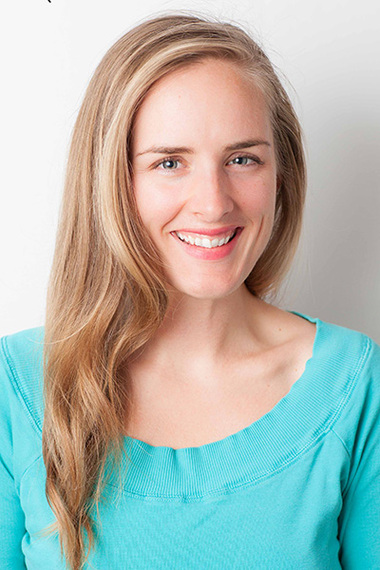
This is an interview with Natalie Cielle, who has taught over 250 classes to incarcerated youth and adults, and trained over 125 yoga teachers to teach behind bars. Natalie became Executive Director of Yoga Behind Bars in June 2010. She holds a Bachelor of Science degree in Psychology from the University of Washington, where she worked as a psychology researcher before becoming a yoga teacher in 2006. She believes that yoga has the power to heal lives and communities.
***
Rob: What originally motivated you to do this work, and what continues to motivate you? How, if at all, has that motivation changed over time?
I think it started out as me just being pissed off about the disparity in access to yoga. It's self-defeating to make yoga available to only the most 'resourced' individuals on our planet. I didn't realize then how powerful yoga can be in the context of prison life. Every week I would leave my class at the downtown jail and juvenile detention center feeling like I had just brought water to a desert. Students would share stories of how a breathing exercise helped them keep calm, or how the class helped them sleep better. So after my first class, it was my feeling of care for the students--people who are invisible to most of us--that kept me deeply committed to showing up every week. When we share powerful mind-body tools with prisoners, we free everyone from the cycle of crime. When we don't, the cycle continues.
Now it's love that motivates me, for our students, our volunteer teachers, and the community. I think love is the most sustainable motivator!
Is there a standout moment from your work with Yoga Behind Bars or incarcerated teens and adults?
There was a man in maximum security who was constantly harming himself, no matter what interventions they tried. Because of this, he had been in a restraint bed for over a year. Can you imagine how awful that would be? So his psychologist, at his wits' end, contacted us in 2011 to start a one-on-one yoga intervention. Our director of training began working with him every week, and the changes have been profound. His psychologist says that it has literally saved this man's life.
What did you know about the population you are working with before you began teaching? What were some of the assumptions you had about this population, and how have those assumptions changed?
I grew up in New Orleans, which is a violence- and poverty-stricken town, where you see mansions on one block and on the next, you see someone getting shot. So I went to school with a very diverse crew of kids, and learned early on that people are people. Differences are microscopic compared with similarities. So I assumed I'd be teaching yoga to people, and that has proven to be true.
What I didn't realize was that I would be doing that work in a place that is the civil rights and human rights battleground of our time. I was pretty ignorant about the system I was walking into. On its face, the story goes: "You commit a crime, you do time." But a quick peer inside reveals a complex social tragedy with cyclical violence--where every criminal is also a victim--and an endless stream of other social issues from drug addiction to poverty. The larger cycles at play are a big reason why Yoga Behind Bars is starting to focus on advocacy, as well as direct service.
What are two distinct ways that your teaching style differs from the way you might teach in a studio, and what are the reasons for these differences?
The first is language: I avoid any and all "yoga jargon." Ask a non-yogi on the street what "sitting bones" are and they will stare at you blankly. I also avoid flying off into yoga-metaphor-land, like "feel your shoulders cascading downwards like a waterfall." Clear, simple language creates a clear and simple experience of yoga for students. Anything that creates a feeling of disconnection is out.
The second is that I expect and allow a more conversational class. There aren't many opportunities to feel supportive community in prison, and I see my role in part to create that atmosphere. In studios, many people are looking for more of a sanctuary away from social interactions, so that's a contrast to prison work.
What has been the greatest challenge in your teaching experience, and what tools have you developed for addressing that challenge?
Honestly, just dealing with the bureaucracy of prisons and jails is hard. There are so many hoops to constantly jump through--endless paperwork, lock-downs, overworked employees--and it can start to wear on my soul if I'm not careful. Even with amazingly supportive staff (with whom we are lucky to work), it takes patience and constant hopefulness.
I have a very strong meditation practice that helps me stay connected to my heart throughout the day; it keeps me from ever getting too off-track. That practice is probably the only reason I'm still standing!
What advice would you give to anyone who is going to teach in the population you work with?
Do it! We need more light shining into prisons. Go to the Yoga Behind Bars website or email me to connect. We've made all the mistakes already, so you don't have to.
What are some of your ideas about or hopes for the future of "service yoga" in America in the next decade?
I'd like to see every yoga student, teacher, studio, and yoga business supporting "service yoga" work in their communities. Think about it: if 10% of every dollar spent on yoga were shared with the members of our community who don't have access to the practice, it would transform our world from the inside out, quickly.
How has this work changed your definition of service? Your definition of yoga? Your practice?
It has taught me the importance of action. Ideas, information, education - they are totally useless without action. One of my teachers once told me, "It is better to embody one beautiful word than to read 1000 books."
What other organizations do you admire?
There are so many incredible people on the planet right now doing great things. Recently, I've been inspired by the ACLU and their work for criminal justice reform; Street Yoga Seattle, which serves youth in difficult life situations; Living Yoga in Portland, and Prison University Project at San Quentin State Prison in CA. That's a short list.
Editor: Alice Trembour
***
1 in 100 American adults are in prison today, and 60% of all released prisoners will return to prison within 3 years. Yoga can help break the cycle.
Want to give the gift of yoga to a prisoner? You can support yoga programs for prisoners by purchasing Prison Yoga Project's book, "Yoga, A Path for Healing & Recovery," a training guide developed through years of experience teaching yoga to incarcerated youth and adults. This book is a powerful resource for anyone trying to break free of negative behavioral patterns and develop the self-reflection and personal discipline necessary to lead a more conscious life, whether incarcerated or free.
Are you a yoga instructor giving back to underserved or un-served populations? Email me if you're interested in being interviewed for this series. And if you're newly inspired to bring yoga to underserved populations, a great place to start is the Seva Teacher Training offered by Yoga Pod Boulder, the studio that looks after my own health. Many teachers who have completed this program are now bringing yoga to those in need.
- Rob Schware
